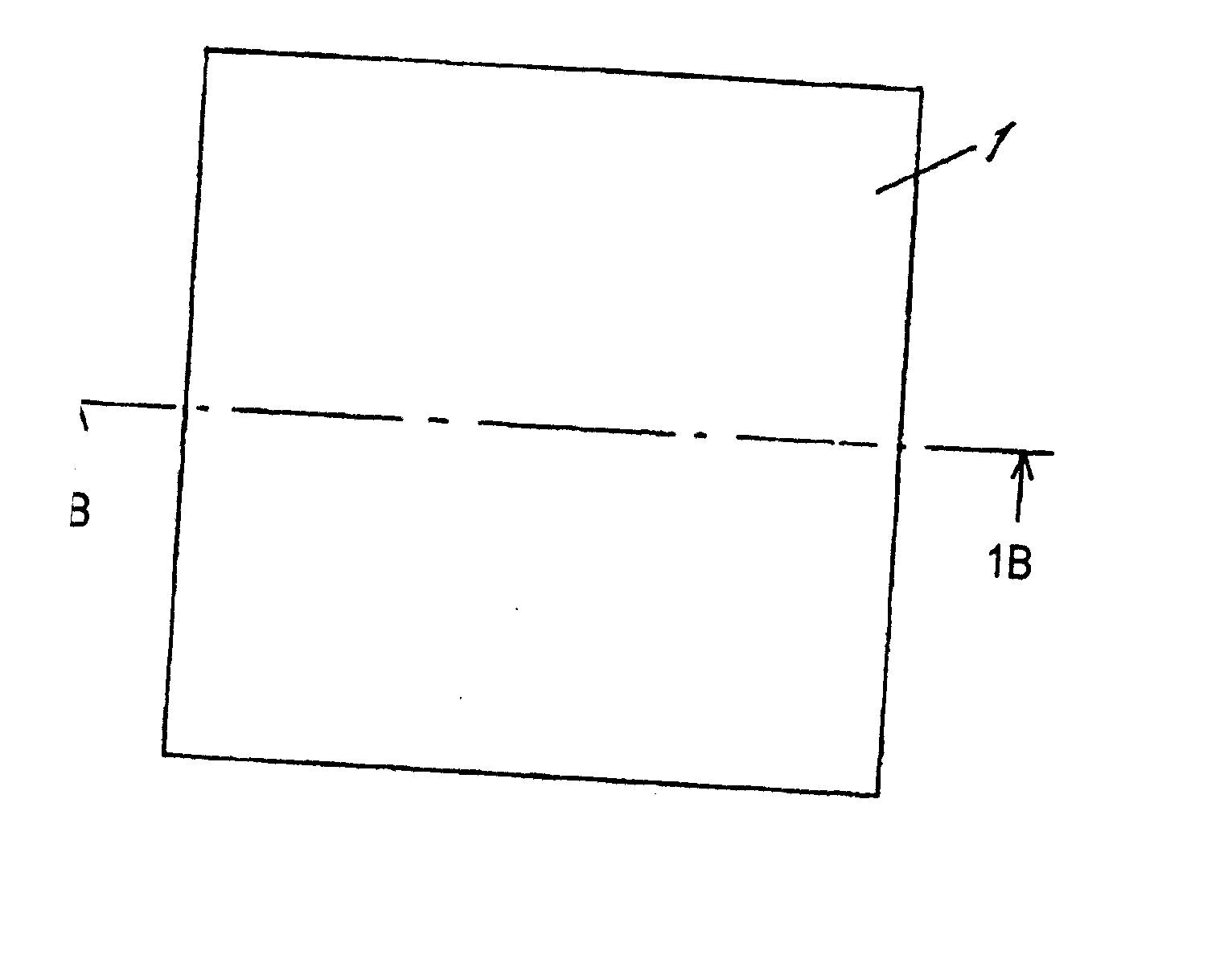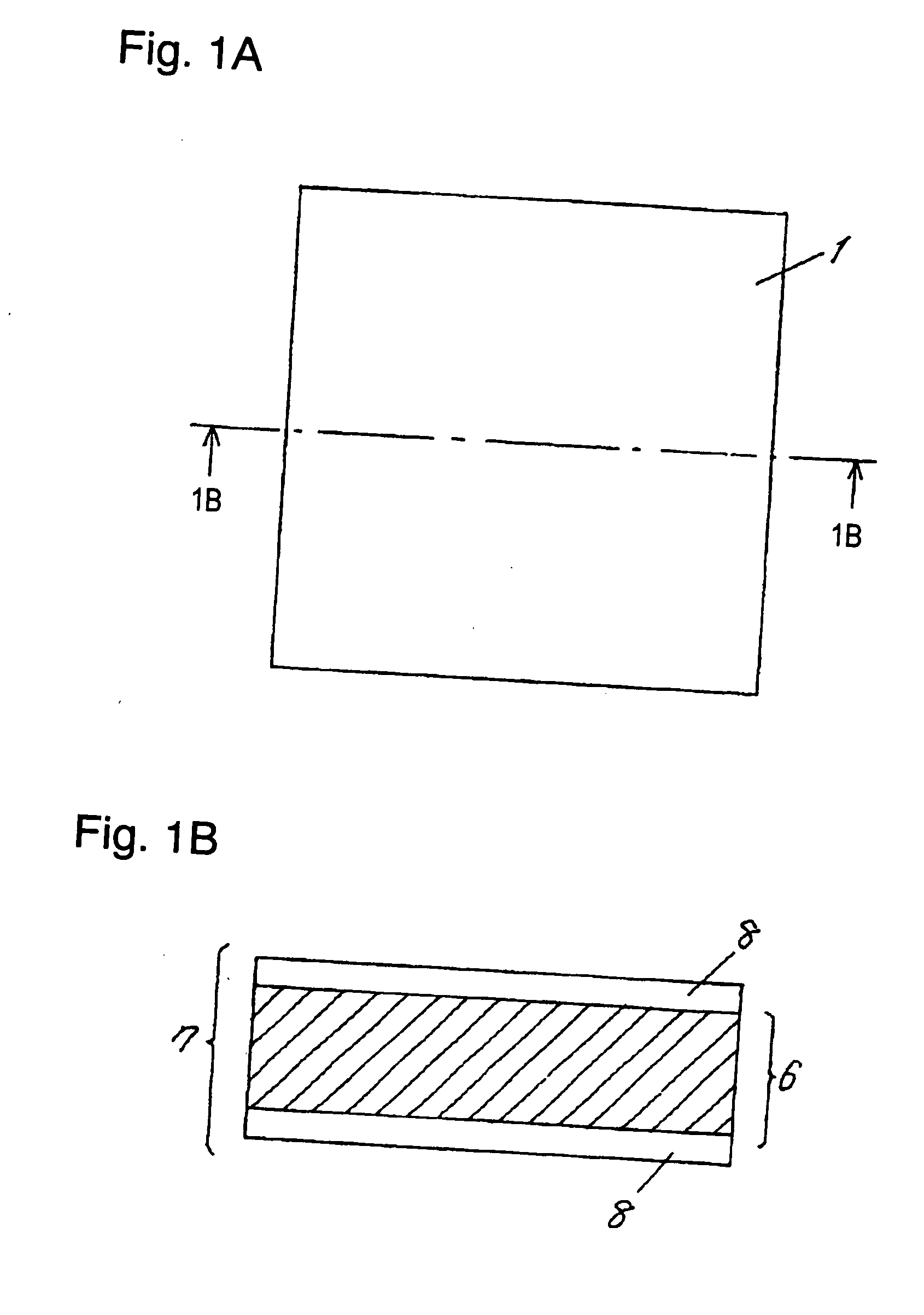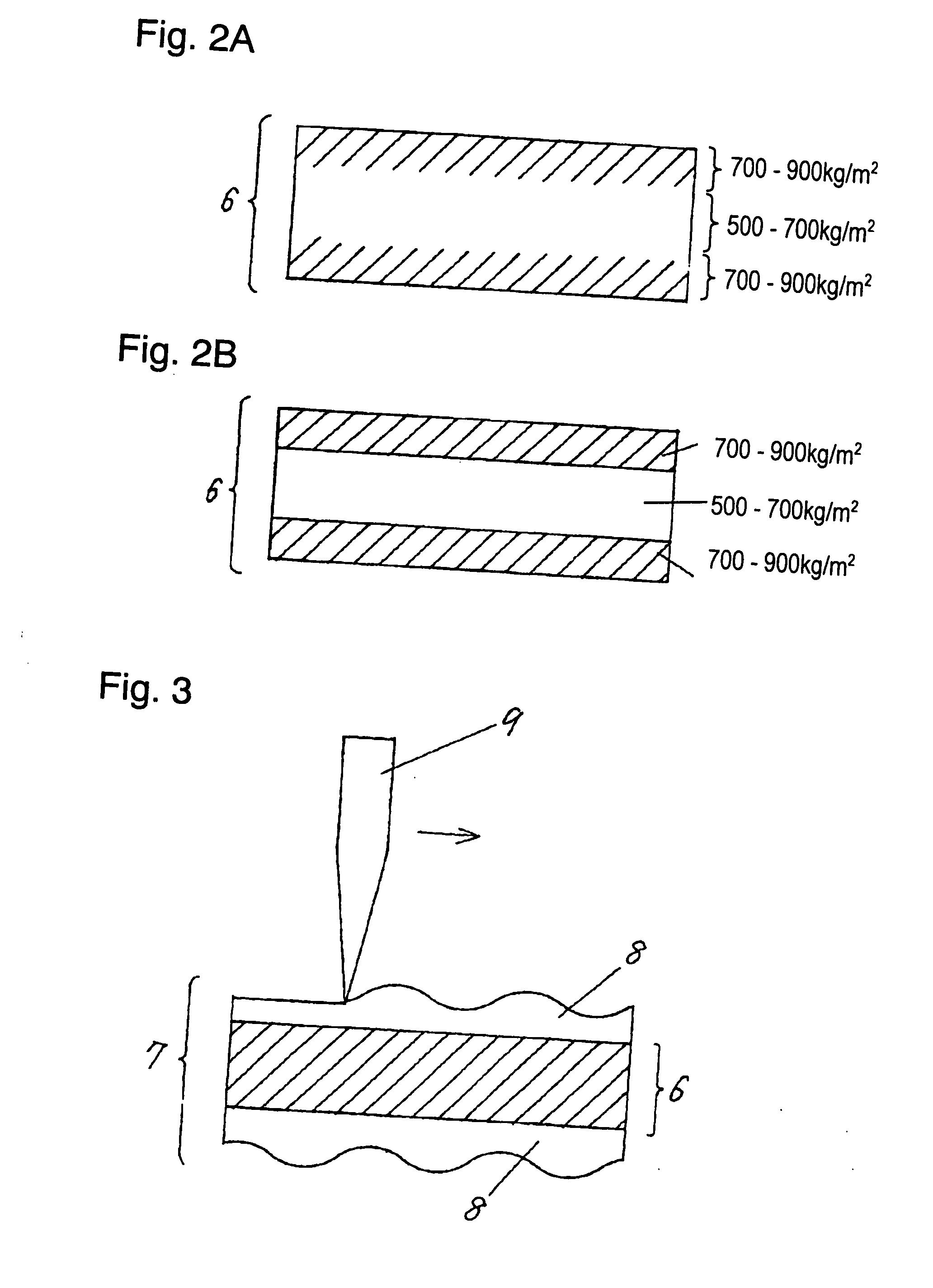Method of manufacturing clad board for forming circuitry, clad board and core board for clad board
a manufacturing method and technology for forming circuits, applied in the direction of printing element electric connection formation, weaving, transportation and packaging, etc., can solve the problems of short circuit or lower insulating reliability between wiring, problems that increase at a higher density of wiring patterns, etc., to prevent short circuits, increase the yield rate of circuit boards, and prevent insulating reliability from lowering
- Summary
- Abstract
- Description
- Claims
- Application Information
AI Technical Summary
Benefits of technology
Problems solved by technology
Method used
Image
Examples
exemplary embodiment 1
[0021] A first exemplary embodiment of the present invention will be described with reference to FIG. 1A to FIG. 4F. FIG. 4A to FIG. 4F are sectional views illustrating a method of manufacturing a clad board for forming circuitry in accordance with the first exemplary embodiment. The manufacturing method includes a releasing-film-sticking step, a hole-forming step, conductive-paste-filling step, peeling-off step, heat-and-pressure-applying step, and circuit-forming step.
[0022] As shown in FIG. 1A and FIG. 1B, pre-preg sheet 1 is a composite material including impregnated resin 7 (e.g. thermosetting resin such as epoxy resin) and non-woven fabric 6 of fiber sheet such as aromatic polyamide fiber (aramid fiber). Impregnated resin 7 is not completely cured but includes a semi-cured portion, i.e., impregnated resin 7 is in B-stage.
[0023] Releasing film 2 shown in FIG. 4A is formed of polymer film such as polyethylene terephthalate (PET) of 20 μm thickness, having a silicon-based relea...
exemplary embodiment 2
[0036] A manufacturing method in accordance with a second exemplary embodiment is basically the same as that of the first embodiment, and detailed description is thus omitted here. Features only in the second embodiment will be described.
[0037] Pre-preg sheet 1 is a composite material formed of thermosetting resin such as epoxy resin (hereinafter called impregnated resin 7) and non-woven fabric 6 of fabric sheet such as aromatic polyamide fiber (aramid fiber). Impregnated resin 7 is not completely cured but includes semi-cured portions, i.e., impregnated resin 7 is in B-stage.
[0038] Aramid fiber non-woven fabric 6 conventionally used for pre-preg sheet 1 has a density ranging from 500 to 700 kg / m3. When resin is impregnated into such non-woven fabric 6, the center section of fabric 6 tends to be impregnated. Therefore, resin is not fully enough impregnated around a surface, and fibers of fabric 6 may be thus exposed on the surface in parts as shown in FIG. 6A and FIG. 6B.
[0039] H...
exemplary embodiment 3
[0047] A manufacturing method in accordance with a third exemplary embodiment is basically the same as that of the first embodiment, and detailed description is thus omitted here. Features only in the third embodiment will be demonstrated.
[0048] Aramid fiber non-woven fabric 6 used in the third embodiment has a density ranging from 700 to 1000 kg / m3 around a surface layer of both the faces of fabric 6 as shown in FIG. 2A. The density of the inside of fabric 6 is lower than that around the surface layer, and preferably ranges from 500 to 700 kg / m3.
[0049] If the density becomes lower than 500 kg / m3, a number of air-gaps in pre-preg sheet 1 increases. This makes conductive paste 4 tend to spread from inside of through holes 3 into pre-preg sheet 1 and the lowers its insulating reliability.
[0050] In pre-preg sheet 1 having the composition discussed above, resin is not impregnated well in the center section of aramid fiber non-woven fabric 6. Instead, much more resin component is atta...
PUM
| Property | Measurement | Unit |
|---|---|---|
| density | aaaaa | aaaaa |
| thickness | aaaaa | aaaaa |
| thickness | aaaaa | aaaaa |
Abstract
Description
Claims
Application Information
 Login to View More
Login to View More - R&D
- Intellectual Property
- Life Sciences
- Materials
- Tech Scout
- Unparalleled Data Quality
- Higher Quality Content
- 60% Fewer Hallucinations
Browse by: Latest US Patents, China's latest patents, Technical Efficacy Thesaurus, Application Domain, Technology Topic, Popular Technical Reports.
© 2025 PatSnap. All rights reserved.Legal|Privacy policy|Modern Slavery Act Transparency Statement|Sitemap|About US| Contact US: help@patsnap.com



